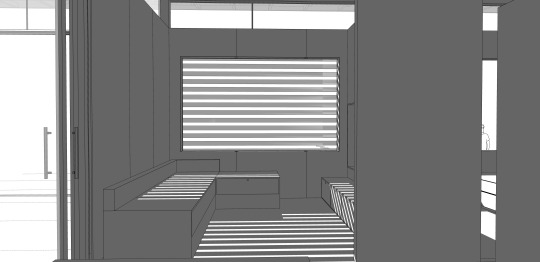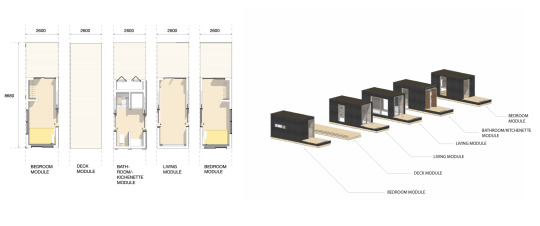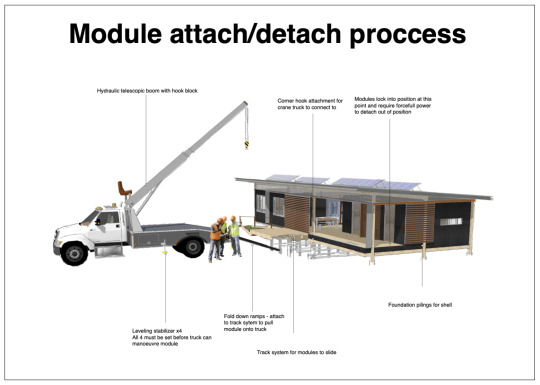Don't wanna be here? Send us removal request.
Photo

Intro slide for presentation
defining the why of my project - setting the scene
0 notes
Photo




Developed floor plans
These plan drawing show all aspects of my design; the core, the modules, shell and deck extension
0 notes
Photo





redesign sketchup model
looking ahead at perspective angles I might use for my final drawings.
I really like the vertical timber cladding repetition and the cast shadows from this.
0 notes
Photo



https://www.standards.govt.nz/assets/Publication-files/BSP/NZS4229-2013.pdf
0 notes
Photo



http://www.gisborneherald.co.nz/frontpage-featured/20200924/housing-crisis-solution/ An initiative to help ease the region's housing crisis has been “deafened by silence” as it seeks Government or iwi support or investment one month since its inception.
Ngati Porou Whare Moe was set up by Ngati Porou elder Joe McClutchie to help whanau in desperate need of accommodation.
It involves the building of quality, New Zealand Building Code-compliant, self-contained units to be sold at cost price ($17,000 to $23,000) on a rent-to-buy basis.
“Built by Ngati Porou in Ngati Porou for Ngati Porou,” says Mr McClutchie, a retired builder who lives in Ruatorea.
The 70-year-old is well aware of the need for emergency, temporary and affordable housing, which is why Ngati Porou Whare Moe was established.
“This is not a Joe McClutchie enterprise, nor is it about making money. There is no profit in this initiative.”
It is a new way for people to get their own home if they cannot afford to build one.
“It is here to demonstrate to our people and agencies what can be done and how it can be done locally as one option to help people in urgent need of suitable and affordable accommodation.”
Many people are renting imported cabins on a six-month minimum rental agreement basis.
“Good on the ‘cabin people',” says Mr McClutchie. “They are the only option (for some) at the moment.”
Ngati Porou Whare Moe wants to offer the option of renting to buy over a four-to-five-year period “not just rent and continue renting”.
“We are waiting to see who will step up for whanau.”
Mr McClutchie says he spoke and wrote to the Te Runanganui o Ngati Porou, Trust Tairawhiti and government housing agencies, offering to show them how it could be achieved.
He has written to the Associate Ministry of Housing, sent messages and emails to the Prime Minister and members of Parliament for the region.
But he is still waiting for someone to help support the initiative that “can put a mother and her baby in a warm whare tomorrow”.
“To date we are deafened by the silence.”
Mr McClutchie says he asked a number of local people “how can you continue paying week in and week out for your cabins?'
“Through WINZ (Work and Income) has been most of the responses.”
Over the past months he has built two whare moe at his home at Tuparoa Road, Ruatorea, and has started on a self-contained third unit.
He tapped into his pension funds to start and pay for the build, along with the tools and infrastructure.
“I had unzipped my mouth so I had to walk the talk.”
In recent weeks, 19 families of around 50 people had gone to his gate in the desperate hope of a solution to their housing needs.
It was tough hearing their stories.
He suggested to them different options of doors to knock on that might be able to provide money for the “rent to buy” option.
However, he felt those who could really help were not stepping up.
“I have been in involved in tribal development and needs for many years. I know the landscape well.
“In my opinion not a lot has changed,” says Mr McClutchie.
“It comes down to people. People who are often tasked with responsibility become complacent in their roles and often have their heads buried in the sand.
“Social needs have always struggled to get attention and what is happening here in the ‘rent to rent' space is not new.”
■ Ruatorea local Paora Brooking has helped Mr McClutchie by creating the Facebook page Ngati Porou Whare Moe on which people are kept up to date with what is happening with the kaupapa and building progress.
“We have had a huge positive response from the followers,” said Mr Brooking.
“A lot of people have been asking about how to purchase and rent-to-own the buildings but because there's no system in place, except for Mr McClutchie building them by himself, it's a hard deal to explain to them.
“Where is the support they need to help them connect to a whare moe which they could start owning tomorrow?
“We really need some form of investment from someone who understands the social need and wants to help.”
Ngati Porou Whare Moe has been supported by others in Tairawhiti, particularly businesses who have been impressed by the kaupapa and what it is trying to achieve.
“We would not be at this stage without the support they have provided,” said Mr McClutchie. “Nga mihi nui.”
http://www.gisborneherald.co.nz/frontpage-featured/20200924/housing-crisis-solution/
1 note
·
View note
Link
Solar access is fundamental to passive design. It involves letting sun in during cooler months to provide warmth, while keeping summer sun out to prevent overheating. This is achieved through orientation and location on the site, room layout, window placement/sizing, and shading.
I have considered solar access in my design process through flexible shading louvres, clerestory windows, polycarbonate roofing and roof overhang length.
0 notes
Photo



Glenn Murcutt - Fredericks / White House, Jamberoo, New South Wales, Australia : 1981-82 / 2001-04
0 notes
Photo





Glenn Murcutt - Walsh House, Kangaroo Valley, New South Wales, Australia : 2001 - 05
0 notes
Photo




more physical model iterations.
I really like the simplicity of this single roof line design.
This makes building standardisation simple and easier to maintain.
The clerestory window ‘strip’ allows for an abundance of natural light to flood the interior spaces. - this was inspired by church spaces of large pavilions with ‘offset’ roof forms.
0 notes














